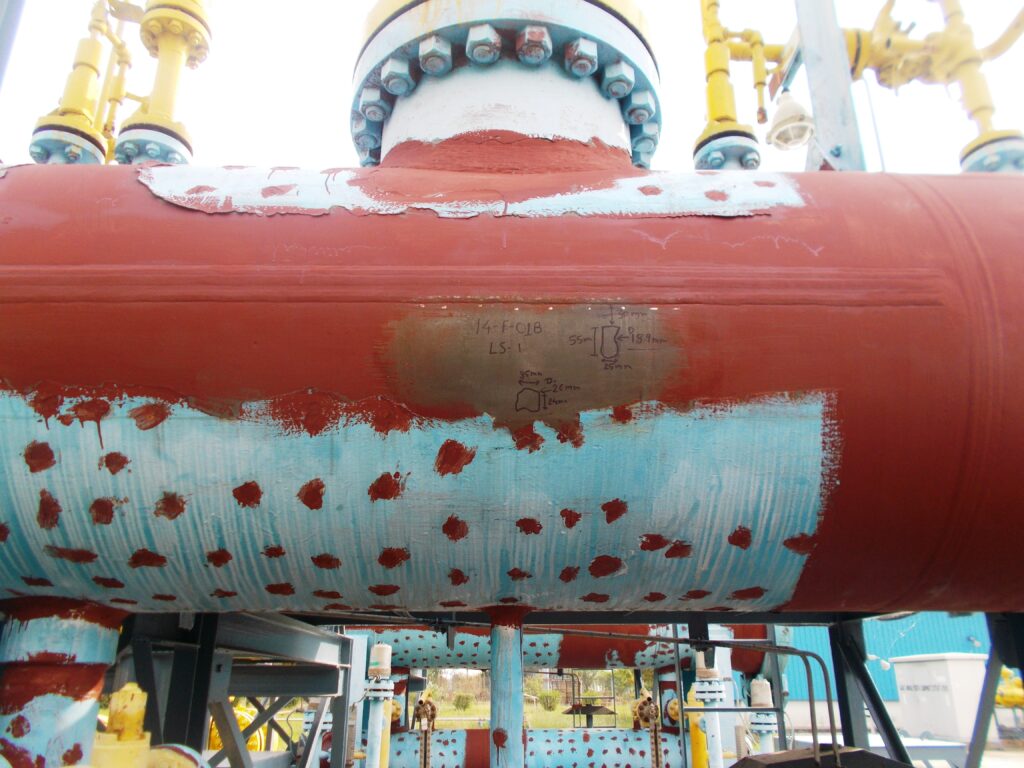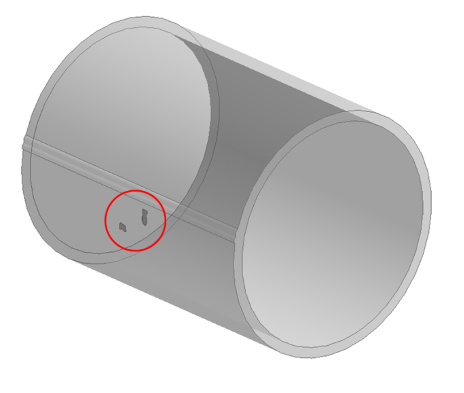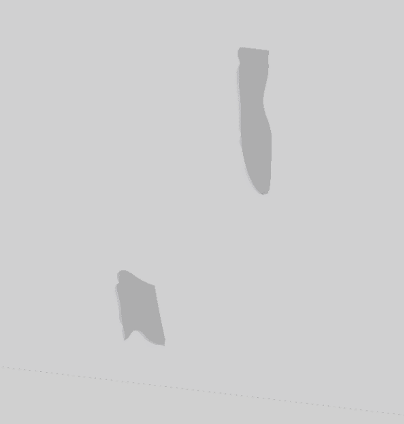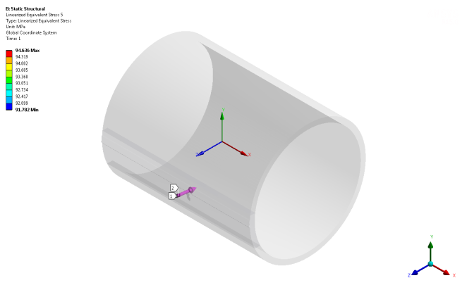
Introduction
Laminations, air bubbles, cavities are one of the common defects in the pipes or shell which may occur during the rolling process of sheets or any other discontinuity in the metals. These laminations increase the chances of stress concentrations at such locations which may lead to cause of failure in the form of bursts or leakage. Such defects in process industries are hazardous hence validations of these defects for their fitness for service is very important. Below figure 1 and figure 2 shows kind of laminations in the process pipes or shells.
There are different Non Destructive tests can be used to find out region of such defects or cavities; Fitness of Service (FFS) Level 3 suggests validations of such laminations can be done using Finite Element Analysis approach to check whether such defects are fit for service under the current operating conditions
Problem Definition:
A prestigious client of ours had several laminations in the heat exchanger pipe which is why the operation of heat exchanger was stopped for the cause of safety. The client approached us to resolve the issue with utmost urgency and we suggested the use of API 579 Fitness for Service (FFS) Level 3 analysis for reviewing the laminations. API 579 FFS Level 3 suggests checking fitness of dents or laminations by Finite Element Analysis approach to calculate stresses at these locations and to check whether they are fit for service. We have performed FEA Analysis of 5 number of different laminations on heat exchanger pipe operating at 95 Kg/cm2 pressure to conclude whether they need to be replaced as un-fit for service or can be used by lowering the operating parameters.
Methodology for fitness for service analysis:
Geometric Modeling:
3D CAD Model of pipe with laminations in the thickness of pipe is generated, open cavities are created across the thickness. Dimensions of the flaws or cavities are provided by the client, below fig. 3 shows the pipe with laminations and figure 4 shows the close view of outline of the lamination into the thickness of pipe.


Results & Findings:
Finite Element Analysis of Pipe with Lamination was carried out as per the guidelines of ASME Section VIII, division 2, Part 5. FEA Analysis was carried out for operating loading condition of Pipe, to check the distribution of stress at lamination region stress categorization was carried out and stresses are checked for the allowable limits of the material, below figures shows the Categorized stress lines near Laminations.


Results Summary:
From Finite Element Analysis stress intensities at the laminations are found out, these stresses are further categorized into the primary membrane, membrane + bending and secondary stresses, which are further compared with the allowable limits as per ASME Section VIII, Division2, Part 5, figure 5.1, Summary of stresses induced at laminations of pipe are listed below in table.
Stresses at Laminations

Challenges & Achievements:
- The major challenge of lamination was to create 3D model from the data received by NDT test as the profile of defect was irregular shaped.
- Finite Element Model discretisation and refinement at the laminated region is required so as to maintain minimum more than two elements across the thickness for both side of lamination defect in order to calculate exact stress by stress categorization.
- FEA Analysis of Heat exchanger pipe with lamination was very time consuming task due to its heavy Finite Element Model size.
- FEA results post processing and validations of FEA Results with analytical approach.
- Following the procedure as per as per API 579 – Fitness for service is one of the very challenging task in this job.
- We have successfully saved client/OEM heat exchanger by implementing API 579 fitness for service methodology to save the heat exchanger and enhance the remaining life of the equipment.
Conclusion:
From the FEA Analysis of Heat Exchanger pipe with laminations, it is concluded that all the stresses induced as lamination region are within allowable limits of material as per API 579 FFS Part 13, hence heat exchanger pipe with laminations is safe for current operating condition.